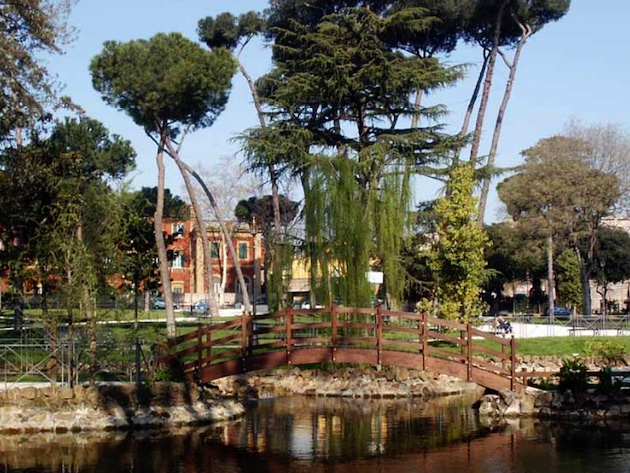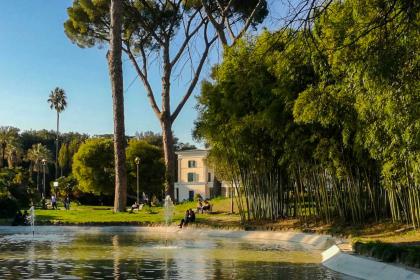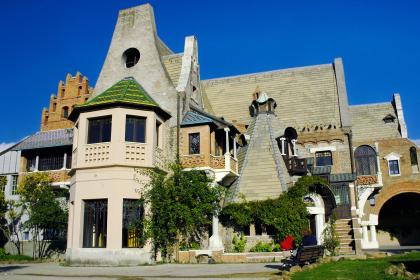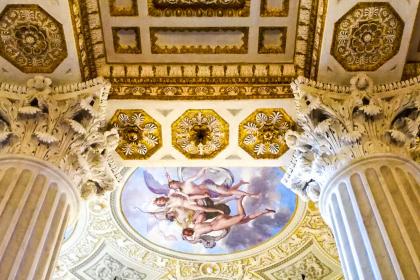
The Villa stands on via Nomentana after Corso Trieste, opposite Villa Torlonia; built by Raffaele De Vico in 1934, it is a lovely public garden reopened to the public in 2004, after an important restoration carried out in collaboration with the Municipal Superintendency.
The origins of the Villa are linked to Cardinal Mariano Pierbenedetti da Camerino who purchased the Vigna in 1585 to transform it into a prestigious residence. The only evidence of this period is a marble fountain. In 1722 the estate was purchased by Cardinal Giulio Alberoni who undertook important restoration work on the buildings and the garden of which only the wall fountain leaning against the small building adjacent to the Casino Nobile remains visible today. The estate subsequently passed to various owners who transformed the Villa and the park according to the 19th century romantic taste with irregular paths, a rustic lake and various fountains. When the property was purchased by the Senator Paganini in 1890, all the vast countryside surrounding the Casino Nobile, cultivated with vineyards and reeds, had gradually disappeared due to the growing building expansion and the park was divided into lots and divided into numerous villas.
In 1913 the Paganini heirs sold the villa to Count Enrico Lutzow; at that time the property was already reduced to the area of the current public park. In the description of the deed of purchase by Count Lutzow, the villa appears arranged according to the typology of the English garden, with a rustic lake, a Swiss chalet, rockeries and flowerbeds. In the park there is also a greenhouse for exotic plants, many tall trees and large quantities of plants of different qualities.
In 1934, the Municipality of Rome purchased the complex to use it for public purposes, using the Casino Nobile as a school and entrusted the arrangement of the park to Raffele De Vico, architect of the Garden Service. In 1938, on the side of Via Nomentana, the monument to the fallen in the First World War of the Nomentano district was placed, a work by Arnaldo Zocchi (1862-1940).
Today the park includes a rustic lake, a small structure that still preserves a valuable fountain composed of a niche covered with rocks and surmounted by graffito decorations, a cave, the noble casino, now incorporated into the imposing twentieth-century building, used as a school and some prefabricated pavilions that house a Montessori nursery school.
Photo: Capitoline Superintendency
Villa Torlonia

 Condividi
Condividi
Casina delle Civette (The House of Owls)

 Condividi
Condividi
Musei di Villa Torlonia - Casino Nobile

 Condividi
Condividi
Information
Open from dawn to the dusk
 Condividi
Condividi
Location
To find out about all accessibility services, visit the Rome accessible section.











































